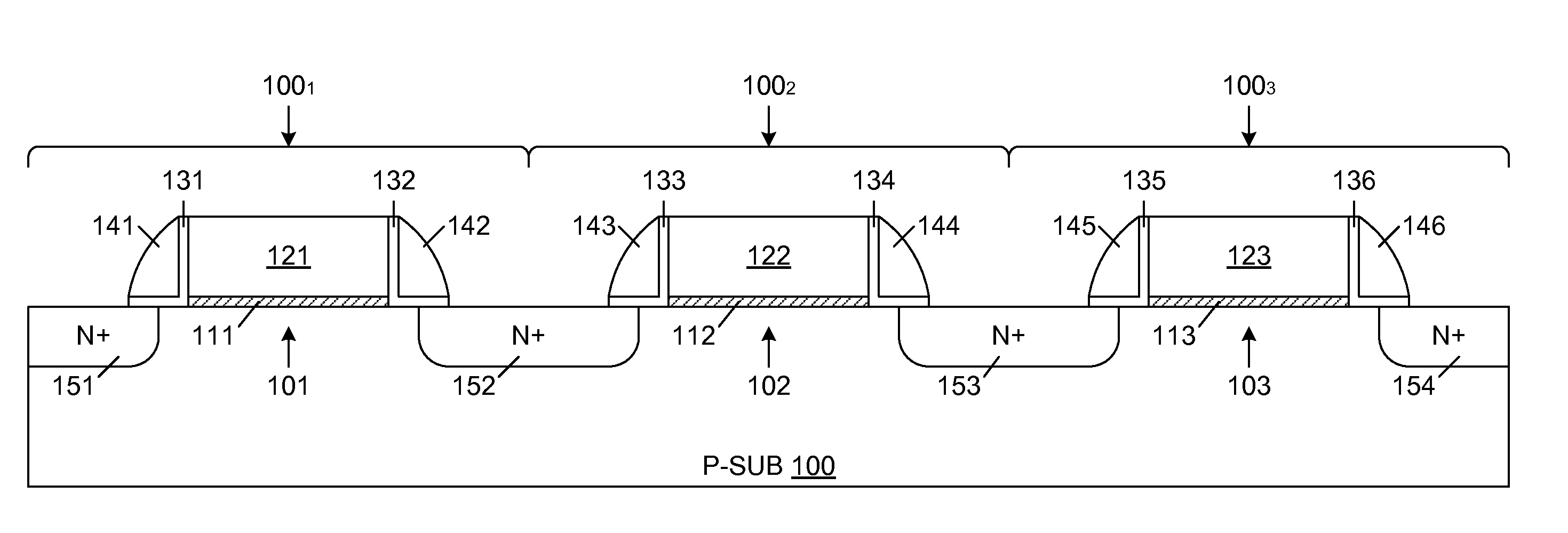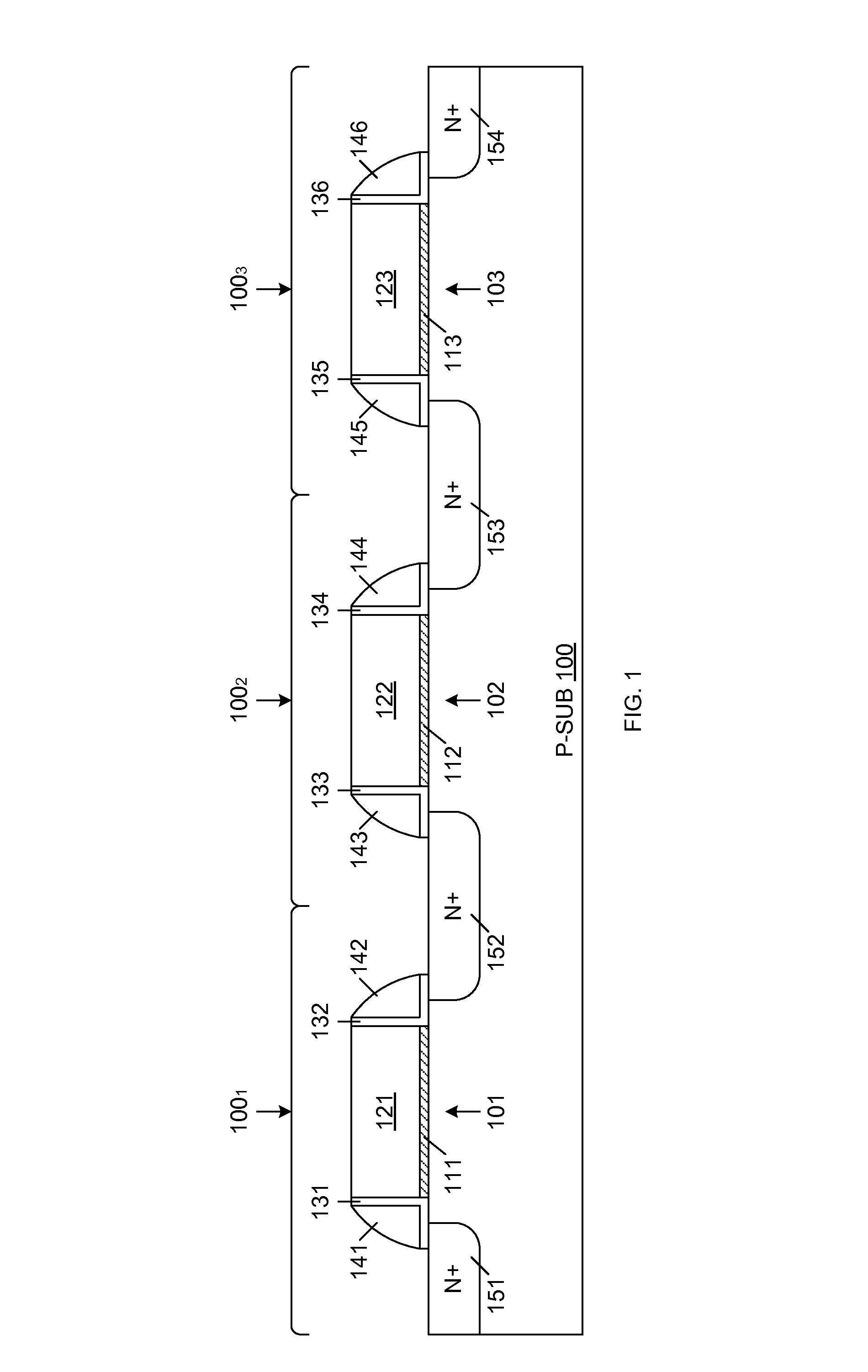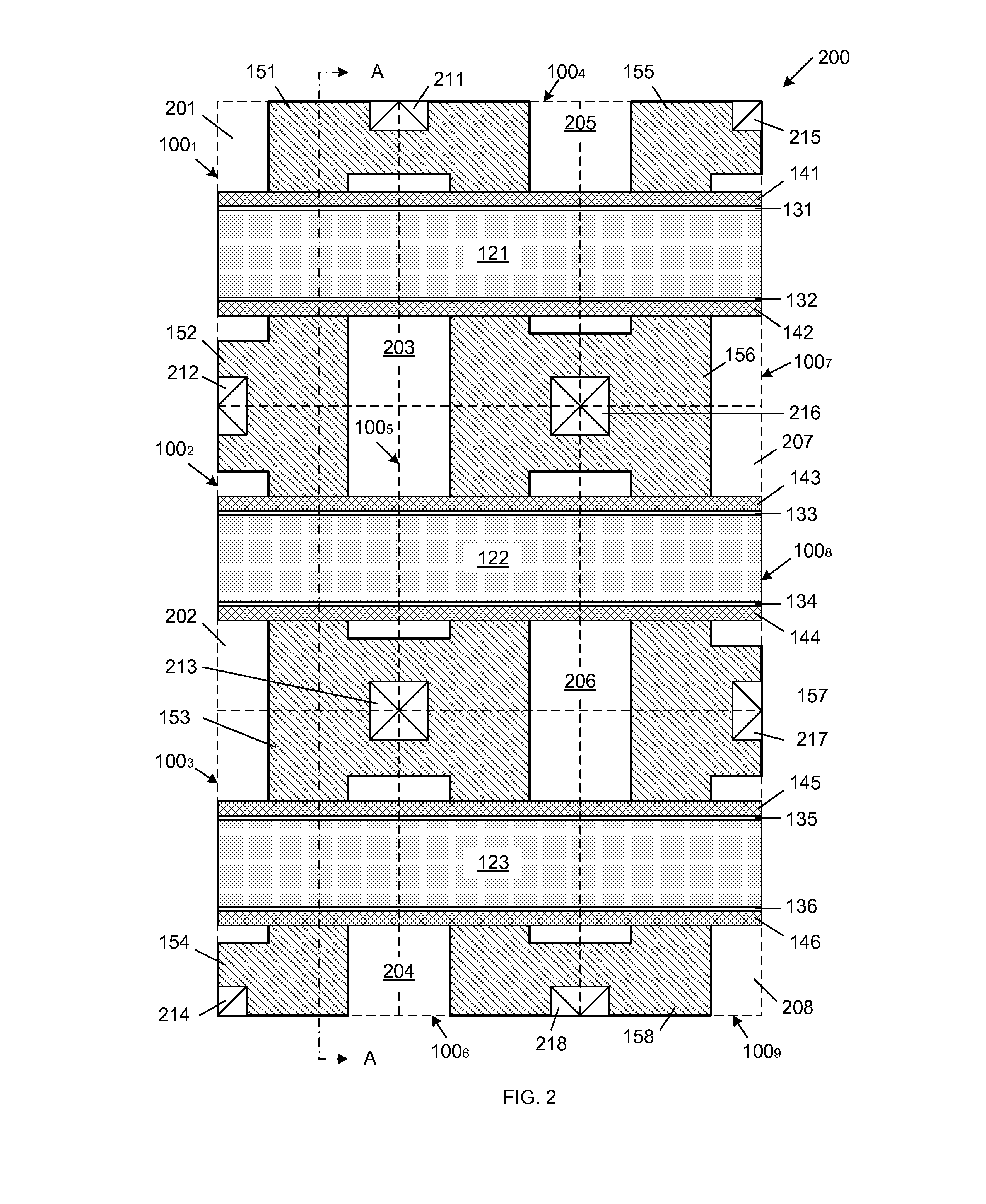Flash-To-ROM Conversion
a flash-to-rom and conversion technology, applied in the field of flash-to-rom conversion techniques, can solve the problems of expensive flash-to-rom conversion, and inability to achieve large-scaled down arrays
- Summary
- Abstract
- Description
- Claims
- Application Information
AI Technical Summary
Benefits of technology
Problems solved by technology
Method used
Image
Examples
first embodiment
[0031]In accordance with a first embodiment of the present invention, a Flash-to-ROM conversion is implemented by modifying a method used to fabricate S-flash memory cell array 200. In general, a threshold voltage (VT) implant is introduced into the channel regions of S-flash cells that are to have a first logic state (i.e., are ‘programmed’ to have a high threshold voltage) as a result of the Flash-to-ROM conversion, while the threshold voltage implant is prevented from entering the channel regions of S-flash cells that are to have a second logic state (i.e., have a low threshold voltage) as a result of the Flash-to-ROM conversion.
[0032]FIGS. 3A-3F are cross sectional views that illustrate a Flash-to-ROM conversion of S-flash memory cells 1001, 1002 and 1003 into S-ROM cells in accordance with the first embodiment. In the example represented by FIGS. 3A-3F, S-flash memory cell 1001 is programmed to have a high threshold voltage, while S-flash memory cells 1002 and 1003 remains un-p...
second embodiment
[0040]In accordance with a second embodiment of the present invention, a Flash-to-ROM conversion is implemented by using separate threshold voltage code implants for programming both sides (i.e., both bits) of an S-Flash memory cell. FIGS. 4A-4D are cross sectional views that illustrate a Flash-to-ROM conversion of S-flash memory cells 1001-1003 in accordance with the second embodiment of the present invention. In the example represented by FIGS. 4A-4D, the left-side bits of S-flash memory cells 1001 and 1002 (i.e., the bits associated with charge storage regions 141 and 143 in memory cells 1001 and 1002) and the right-side bit of S-flash memory cell 1003 (i.e., the bit associated with charge storage region 146 in memory cell 1003) are each programmed to have a high threshold voltage. The right-side bits of S-flash memory cells 1001 and 1002 and the left-side bit of S-flash memory cell 1003 remain non-programmed, and exhibit a relatively low threshold voltage. Although the left-side...
third embodiment
[0048]In accordance with a third embodiment of the present invention, the width of the threshold voltage coding mask is modified to program each bit to different threshold voltage levels, thereby enabling each storage structure to represent multiple bits using multiple threshold voltage levels. Four bits per cell may be challenging for high-volume (tens of Mbits and above) embedded memories. In accordance with the third embodiment, the width of the opening of the threshold voltage coding mask can have three different widths, thereby allowing each bit to be programmed to four distinct levels (including non-programmed). Even with a maximum misalignment of 0.1 microns (actual values are lower in the production 0.18 micron process flow), the actual sizes of the openings in the threshold voltage code mask are distinguished by providing for 0.3, 0.55 and 0.8 micron openings. Taking into account an almost 5 Volt memory window for 1014 / cm−2 and 15 keV implant (see, Table 1), a 4 bit / cell (t...
PUM
 Login to View More
Login to View More Abstract
Description
Claims
Application Information
 Login to View More
Login to View More - R&D
- Intellectual Property
- Life Sciences
- Materials
- Tech Scout
- Unparalleled Data Quality
- Higher Quality Content
- 60% Fewer Hallucinations
Browse by: Latest US Patents, China's latest patents, Technical Efficacy Thesaurus, Application Domain, Technology Topic, Popular Technical Reports.
© 2025 PatSnap. All rights reserved.Legal|Privacy policy|Modern Slavery Act Transparency Statement|Sitemap|About US| Contact US: help@patsnap.com



